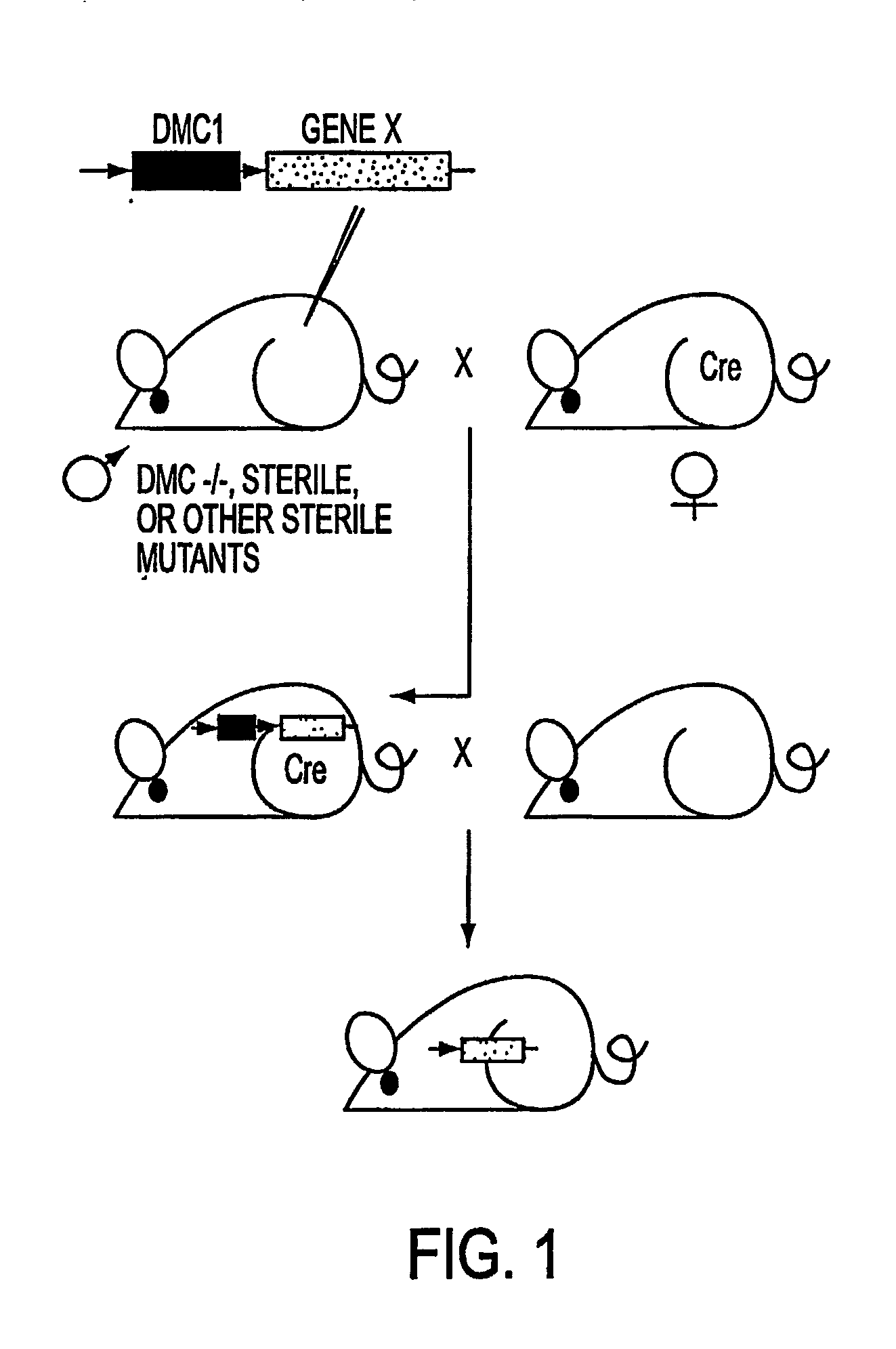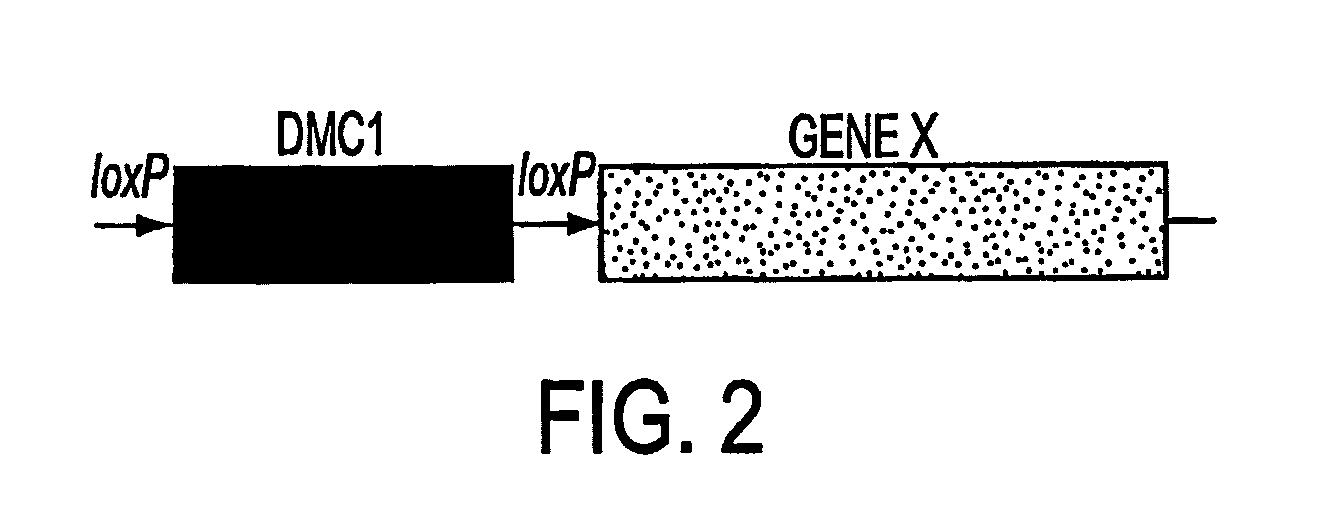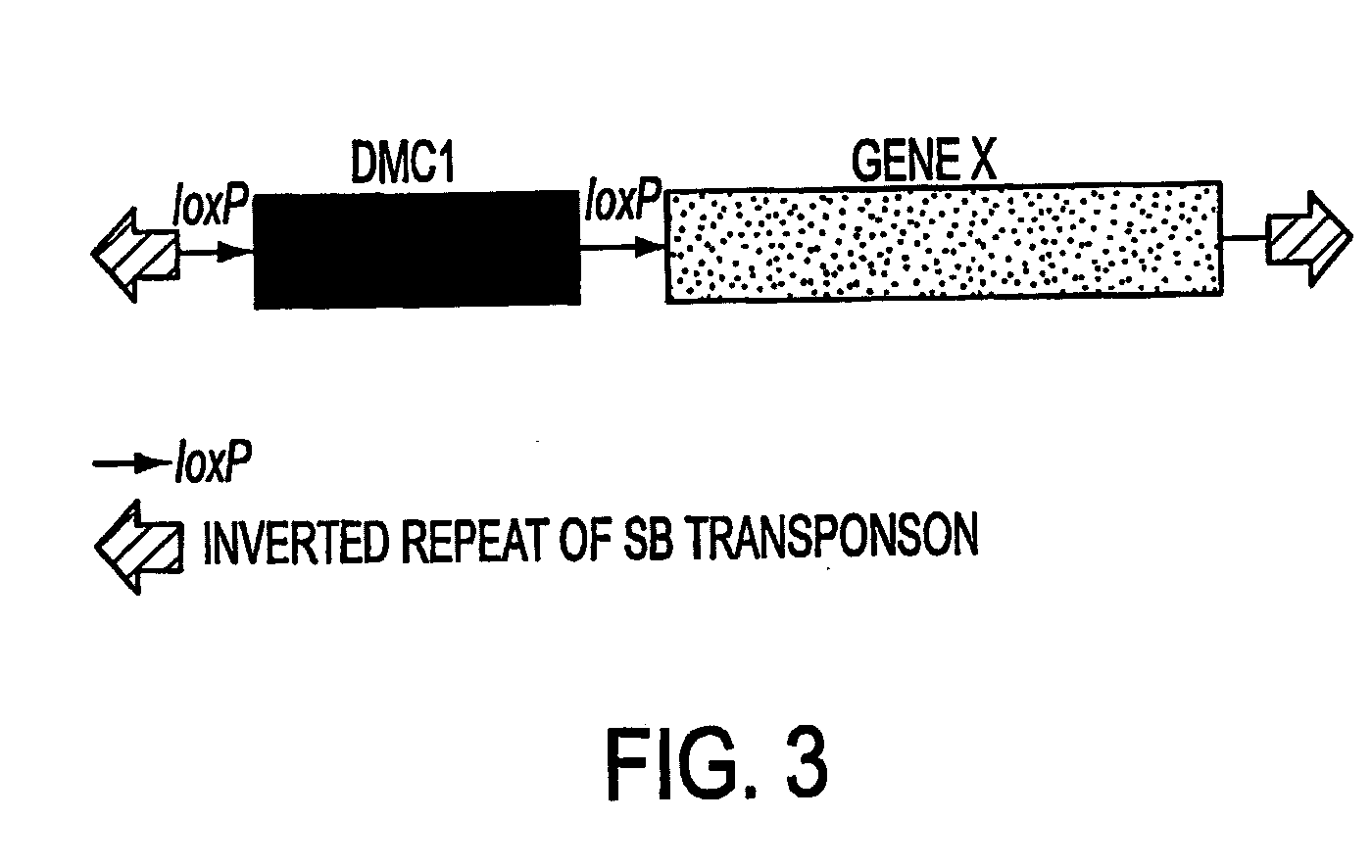Generation of transgenic mice by transgene-mediated rescue of spermatogenesis
a spermatogenesis and transgene technology, applied in the field of molecular and developmental biology, can solve the problems of lack of reliable culture methods, inability to achieve reliable culture methods, etc., and achieve the effect of simplifying laborious and time-consuming
- Summary
- Abstract
- Description
- Claims
- Application Information
AI Technical Summary
Benefits of technology
Problems solved by technology
Method used
Image
Examples
Embodiment Construction
The key concept underlying this invention is the use of a male mouse that has been rendered sterile due to a mutation or mutations in a gene or genes encoding a “spermatogenesis essential factor” such as Dmc1, Prp8, or Ccna1. A transgenic construct such as that shown in FIG. 2 containing a wild type version of the mutant SEF gene is introduced into mouse testicular germ cells preferably by electroporation or other means. The expression of the wild type gene in the mutant germ cells restores normal spermatogenesis and promotes development of functional sperm. Since the mutant germ cells cannot produce functional sperm without expression of the SEF transgene, functional sperm that have been rescued by the transgenic construct also harbor the nucleic acid of interest that was part of that construct. When these transgenic male mice are later mated to normal females, their progeny will inherit the transgene (FIG. 1).
Transgenic Construct
The transgenic construct, preferably linear, co...
PUM
| Property | Measurement | Unit |
|---|---|---|
| Nucleic acid sequence | aaaaa | aaaaa |
Abstract
Description
Claims
Application Information
 Login to View More
Login to View More - R&D
- Intellectual Property
- Life Sciences
- Materials
- Tech Scout
- Unparalleled Data Quality
- Higher Quality Content
- 60% Fewer Hallucinations
Browse by: Latest US Patents, China's latest patents, Technical Efficacy Thesaurus, Application Domain, Technology Topic, Popular Technical Reports.
© 2025 PatSnap. All rights reserved.Legal|Privacy policy|Modern Slavery Act Transparency Statement|Sitemap|About US| Contact US: help@patsnap.com



